Louise Nevelson (American, 1899-1988) Rain Forest Column XVIII, 1962 painted wood on formica base Overall with Base: 109 x 14 x 14 in. 276.9 x 35.6 x 35.6 cm. This work was executed in 1962. Fußnoten Provenance The Pace Gallery, New York Private Collection, New York Sale: Sotheby's, New York, Contemporary Art Day Auction, 15 May 2014, Lot 116 Acquired directly from the above by the present owner Exhibited New York, The Jewish Museum, Louise Nevelson Constructing a Legend, 5 May-16 September 2007, p. 129, no. 39, illustrated in color (this exhibition later traveled to San Francisco, de Young Fine Arts Museum, 27 October 2007-13 January 2008) Widely regarded as one of the most significant and groundbreaking artists of the Twentieth Century, Louise Nevelson challenged traditional notions of art and beauty with her monochromatic constructions. Initially gaining acclaim for her relief works, shadow boxes and wall assemblages, Nevelson received public recognition when she was included in the trailblazing exhibition, Sixteen Americans, at the Museum of Modern Art, New York, 1959-1960. It was here that her work was exhibited alongside other exceptional contemporary artists including Frank Stella Mark Rothko Robert Rauschenberg and Jasper Johns and positioned her as a pioneering figure in American sculpture. Known for her wood assemblage relief sculptures, it is not surprising that Nevelson's father was a contractor and lumber merchant. The family of Russian Jewish émigrés came to the United States in 1905, speaking only Yiddish, and settled in the small town of Rockland, Maine. Aspiring to urban city life, Nevelson moved to New York, where she studied at the Art Students League under Kenneth Hayes Miller and Hans Hofmann Refusing to accept money from her former husband after her divorce, Nevelson and her son were forced to scour the streets of New York for firewood. Wood and other found objects would become the primary medium for her sculptures, due in part to a lack of resources and to her interest in deconstructing images to their derivative parts. Nevelson began her practice of creating wood assemblages in the early 1940s, by combining together fragments of carved wood, pieces of furniture, milk boxes and lettuce crates to create an illusion of space. Nevelson chose wood specifically because of its "livingness". As she once noted, "I automatically went to wood. I wanted a medium that was immediate. Wood was the thing that I could communicate with almost spontaneously and get what I was looking for. For me, I think it's the textures and the livingness....when I'm working with wood, it's very alive. It has a life of its own. If this wood wasn't alive, it would be dust. It would disintegrate to nothing. The fact that it's wood means it has another life." (the artist in D. McKown, Dawns and Dusks, New York, 1976, p. 76, 111, 125, 128, 130) This sense of a living work of art is evident in Rain Forest Column XVIII (1962). Painted in black and created from wood, the sculpture is monumental in scale, creating an uplifting sense of growth and movement. The imposing size draws the viewer in, encouraging them to explore the intricate collaged elements along the length of the striking vertical composition. The powerful totemic design combined with the richness of textures, simultaneously suggests both a sense of motion and depth. The present sculpture is also a powerful example of Nevelson's unique ability to manipulate her materials. The artist created her sculptures by hand, hammering and assembling each object and material. The hand-wrought method used to create each work suggests a highly personal and unique process, as her creative practice can be seen in every aspect of the sculpture. Similar formal characteristics are also visible in Nevelson's Maquette for Sky Landscape II (1976-1979). Elegant in design, the work exudes a delicate balance of form and shape which is only emphasized by the smoothness of the steel surface of the wor
Louise Nevelson (American, 1899-1988) Rain Forest Column XVIII, 1962 painted wood on formica base Overall with Base: 109 x 14 x 14 in. 276.9 x 35.6 x 35.6 cm. This work was executed in 1962. Fußnoten Provenance The Pace Gallery, New York Private Collection, New York Sale: Sotheby's, New York, Contemporary Art Day Auction, 15 May 2014, Lot 116 Acquired directly from the above by the present owner Exhibited New York, The Jewish Museum, Louise Nevelson Constructing a Legend, 5 May-16 September 2007, p. 129, no. 39, illustrated in color (this exhibition later traveled to San Francisco, de Young Fine Arts Museum, 27 October 2007-13 January 2008) Widely regarded as one of the most significant and groundbreaking artists of the Twentieth Century, Louise Nevelson challenged traditional notions of art and beauty with her monochromatic constructions. Initially gaining acclaim for her relief works, shadow boxes and wall assemblages, Nevelson received public recognition when she was included in the trailblazing exhibition, Sixteen Americans, at the Museum of Modern Art, New York, 1959-1960. It was here that her work was exhibited alongside other exceptional contemporary artists including Frank Stella Mark Rothko Robert Rauschenberg and Jasper Johns and positioned her as a pioneering figure in American sculpture. Known for her wood assemblage relief sculptures, it is not surprising that Nevelson's father was a contractor and lumber merchant. The family of Russian Jewish émigrés came to the United States in 1905, speaking only Yiddish, and settled in the small town of Rockland, Maine. Aspiring to urban city life, Nevelson moved to New York, where she studied at the Art Students League under Kenneth Hayes Miller and Hans Hofmann Refusing to accept money from her former husband after her divorce, Nevelson and her son were forced to scour the streets of New York for firewood. Wood and other found objects would become the primary medium for her sculptures, due in part to a lack of resources and to her interest in deconstructing images to their derivative parts. Nevelson began her practice of creating wood assemblages in the early 1940s, by combining together fragments of carved wood, pieces of furniture, milk boxes and lettuce crates to create an illusion of space. Nevelson chose wood specifically because of its "livingness". As she once noted, "I automatically went to wood. I wanted a medium that was immediate. Wood was the thing that I could communicate with almost spontaneously and get what I was looking for. For me, I think it's the textures and the livingness....when I'm working with wood, it's very alive. It has a life of its own. If this wood wasn't alive, it would be dust. It would disintegrate to nothing. The fact that it's wood means it has another life." (the artist in D. McKown, Dawns and Dusks, New York, 1976, p. 76, 111, 125, 128, 130) This sense of a living work of art is evident in Rain Forest Column XVIII (1962). Painted in black and created from wood, the sculpture is monumental in scale, creating an uplifting sense of growth and movement. The imposing size draws the viewer in, encouraging them to explore the intricate collaged elements along the length of the striking vertical composition. The powerful totemic design combined with the richness of textures, simultaneously suggests both a sense of motion and depth. The present sculpture is also a powerful example of Nevelson's unique ability to manipulate her materials. The artist created her sculptures by hand, hammering and assembling each object and material. The hand-wrought method used to create each work suggests a highly personal and unique process, as her creative practice can be seen in every aspect of the sculpture. Similar formal characteristics are also visible in Nevelson's Maquette for Sky Landscape II (1976-1979). Elegant in design, the work exudes a delicate balance of form and shape which is only emphasized by the smoothness of the steel surface of the wor
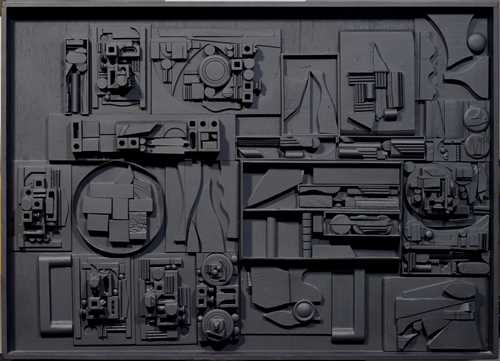
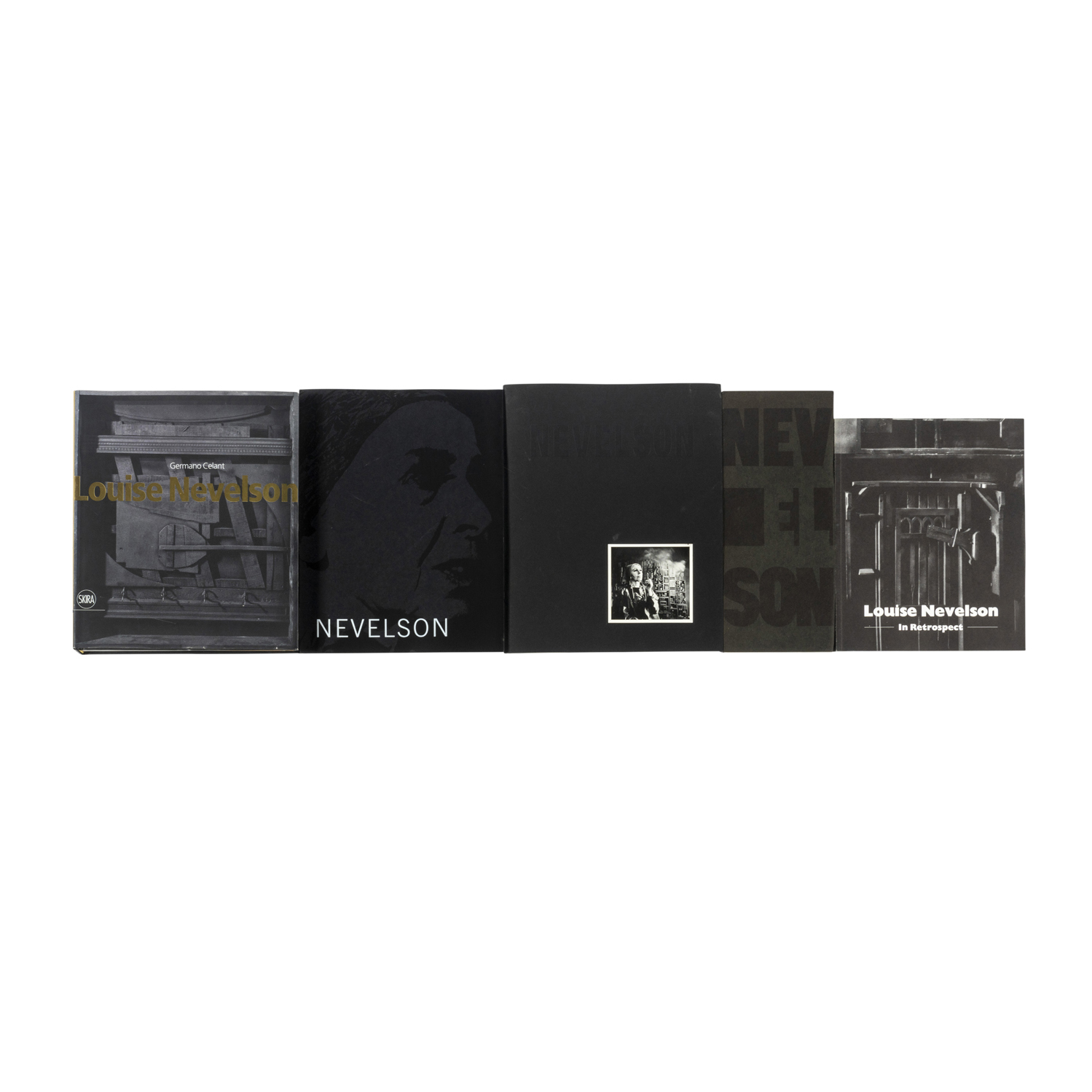
.jpg)

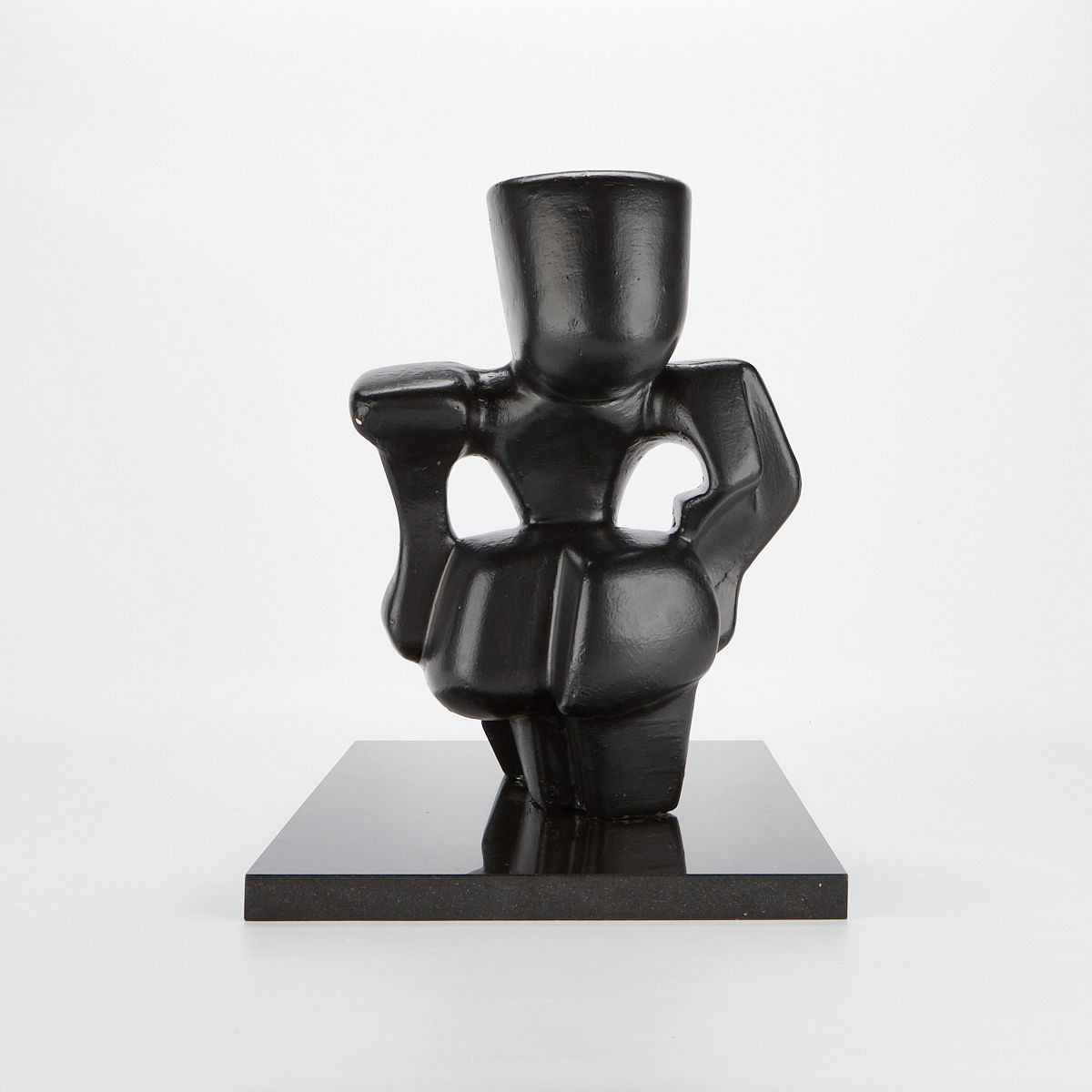

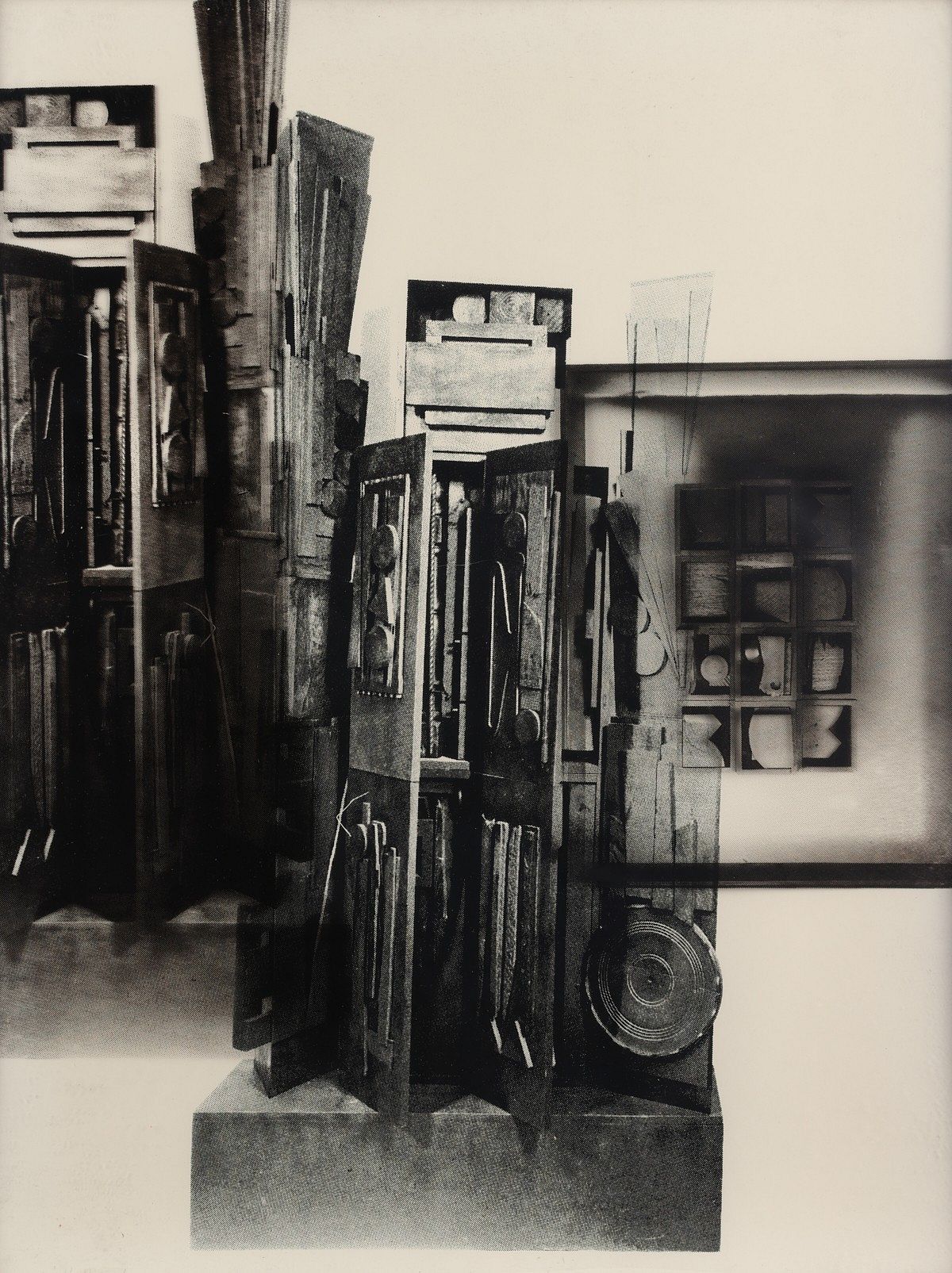



.jpg)

.jpg)
.jpg)
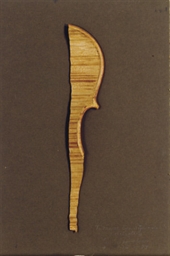
Try LotSearch and its premium features for 7 days - without any costs!
Be notified automatically about new items in upcoming auctions.
Create an alert